| |
|
| |
| |
|
Welcome
Welcome to the July issue of the USAPEEC ASEAN Regional Office’s newsletter.
This newsletter seeks to provide readers with useful product and major market information for institutional and consumer users of U.S. poultry. Readers will find a variety of general market information, program activities as well as useful product information in every issue.
This issue, we share several activities that took place in Southeast Asia.
Contents:
- First Master Class on U.S. Egg Products met with keen responses
- USAPEEC Pavilion attracts daily crowds at the Food & Hotel Myanmar 2019 Show
- Master Class on U.S. poultry conducted by celebrity chefs at SHATEC for culinary students
- Dewakan, the unassuming Malay fine dining restaurant, awarded one of Asia’s Best Restaurants 2019
- Fried Rice, a most versatile dish
- Fried chicken skin – the best part of the chicken?
- Hua Hin: an up and coming rustic expat retirement hotspot
- Gourmet meals prepared to order at short notice in a supermarket
- New Restaurants for the Busy Bees in Singapore!
- What’s behind the success of food delivery apps in Southeast Asia?
- News Bites
|
|
|
| |
|
|
| |
|
Additional Market Information Available
We have updated our website to include more information on market reports and export documentation guidelines.
You can visit our ASEAN website at: www.usapeecasean.com |
|
|
| |
|
|
|
|
|
First Master Class on U.S. Egg Products met with keen responses
The first Master Class on U.S. egg products was carried out on June 22 at Nanyang Polytechnic, Singapore, for a group of 48 culinary students, trainee chefs, hotel management staff, and commis cooks. Junior chefs, F&B staff, and culinary students were thrilled to have the opportunity to witness the step-by-step procedure of preparing unique pastry products by well-known Pastry Chef Edwin Leow from the Singapore Marriott Tang Plaza.
The program was funded by Iowa Soybean and the egg products were donated by Rembrandt. The objective of the class was to educate culinary students and junior chefs on the flexibility and use of egg products in western cuisines and in a variety of baking preparations. Pastry Chef Edwin Leow demonstrated the use of the egg products in two pastry products - Raspberry Chocolate Choux Puff and Baked Caramelized Banana ‘Dim Sum’ Strudel. After the class, participants indicated that they were more aware of the nutritional qualities and high food safety standards of U.S egg products. Many were more inclined to use egg products in their future menu planning as well.
|
|
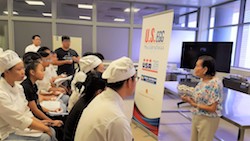 |
Margaret Say, USAPEEC ASEAN, Director welcomes the U.S. Egg Master Class participants |
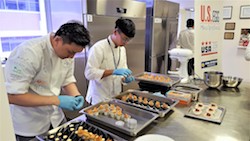 |
Pastry Chef Edwin Leow demonstrates the finishing touch to the Baked Caramelized Banana Dim Sum Strudel |
 Margaret Say USAPEEC(centre) and Chef Edwin Leow(extreme right) with class participants.jpg) |
Bernard Kong, Program Director (3rd left), Margaret Say, USAPEEC ASEAN Director (centre) and Chef Edwin Leow (extreme right) with class participants |
| |
| |
| |
| |
|
|
|
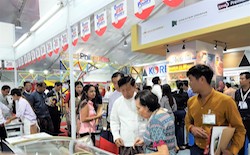 |
|
USAPEEC Pavilion attracts daily crowds at the Food & Hotel Myanmar 2019 Show
Scores of trade visitors, who thronged the USAPEEC Pavilion during the Food & Hotel Myanmar 2019 Show, were treated to varied samplings of specially created poultry dishes. Margaret Say, USAPEEC ASEAN Director, was kept busy as numerous trade visitors flocked to the USAPEEC Pavilion seeking information on U.S. poultry products.
The show is Myanmar’s premier food show and was held from June 5 to 7, 2019. It attracted 152 exhibitors from 21 countries including 6 international Pavilions. An estimate of 7,300 trade visitors from 26 countries, including Australia, China, France, Germany, Netherlands, United Kingdom, Singapore, and the United States, attended the show. Held at the Myanmar Expo in Yangon, a wide range of bakery products, chilled and frozen food, beverages, fresh produce, health and organic food, seafood, specialty and fine food, snacks and dairy products were displayed at the show.
|
|
Margaret Say, USAPEEC ASEAN Director, welcomes VIP visitors to the USAPEEC Pavilion at the Food & Hotel Myanmar 2019 Show |
 |
Margaret Say, USAPEEC ASEAN Director, in discussion with trade visitors |
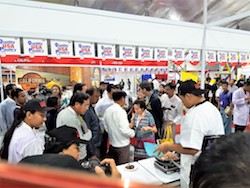 |
Trade visitors stopping by the USAPEEC Pavilion which features daily food tasting |
| |
| |
|
|
|
|
|
Master Class on U.S. poultry conducted by celebrity chefs at SHATEC for culinary students
USA Poultry & Egg Export Council collaborated with Singapore Hotel and Tourism Education Centre (SHATEC) to carry out a Master Class on U.S. poultry for their culinary students who had completed the poultry curriculum classes. On June 18, two celebrity chefs - Eric Low and Xu Tian Mu - conducted the Master Class at SHATEC’s premises.
Chef Eric demonstrated the use of specially selected ingredients to bring out the flavors of his two creations - the steamed duck with sour mustard greens and ginger, and Teochew style meatballs in superior broth.
Chef Tian Mu showed his unique version of breaded chicken breast and chilled chicken roulade. Students were encouraged to be creative when crafting their own dishes in their future workplace.
|
|
|
 Chef Eric Low and Bernard Kong Program Director(standing behind L-R), .jpg) |
Maria Cheong & Margaret Say from USAPEEC ASEAN (standing front row from left to right), Chef Eric Low, and Bernard Kong Program Director (standing behind from left to right) |
 .jpg) |
Margaret Say with culinary students paying close attention to Chef Eric Low (with black apron) |
 |
Chef Tian Mu demonstrates his skill during the Master Class session for SHATEC Culinary students |
| |
| |
|
|
|
 Dewakan@ Facebook.jpg) |
|
Dewakan, the unassuming Malay fine dining restaurant, awarded one of Asia’s Best Restaurants 2019
Dewakan is the first and only Malaysian restaurant to make it to the Asia’s 50 Best Restaurant 2019. This success marks a milestone in Malaysia’s fine dining scene. Ranked at No. 46, it is also the first and only ethnic Malay cuisine to make it onto the list.
It joins a handful of other Southeast Asian fine dining restaurants such as Singapore’s Odette (No. 1) which serves French cuisine, and Thailand’s Gaggan (No. 3) which serves Indian cuisine.
What makes Dewakan’s elevation to the international fine dining list so amazing, is the fact that Dewakan did not emerge from a posh hotel nor was it headed by an established international chef. This award-winning restaurant is tucked away in KDU University College in Shah Alam, located just outside of Kuala Lumpur. It is headed by the school’s former molecular gastronomy lecturer, Darren Teoh.
The name Dewakan came from two Malay words: ‘Dewa’ meaning ‘god’, and ‘makan’ meaning ‘to eat’. Dewakan is easily translated as ‘food from god’. Darren Teoh adheres to this philosophy of appreciating food from the land (or god) to the fullest. He sources his indigenous ingredients from various communities across Malaysia and uses those native ingredients to craft palatable and visually stunning creations. Examples of little-known native produce used in his creations include a jungle fruit called kulim and a ginger flower called bunga kantan.
| |
Nasi Kerabu Dish (Malay rice dish) (Photo: Dewakan’s Facebook page) |
| |
|
|
| |
|
|
|
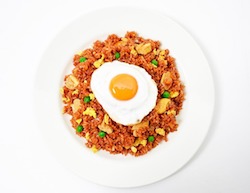 |
|
Fried Rice, a most versatile dish
Fried rice is a quintessential dish that is a popular part of almost every Asian culture. It is at its most basic, cooked rice fried in a wok with other ingredients such as eggs, vegetables, seafood, poultry, or pork. It can be eaten on its own, or with another main dish.
Most Asians would have grown up with homemade fried rice. It is generally accepted that fried rice originated from the city of Yangzhou in China during the Sui dynasty (AD 589-618). Yangzhou fried rice remains the standard by which other versions are compared to. The fried rice is well-flavored with a mix of prawns, roasted meat, scallions, and vegetables. The rice grain is fluffy and distinct, yet sticky enough to be picked up by chopsticks, an effect that is easily achievable only with a high-power stove that generates intense heat.
Over the years, countries in Southeast Asia have developed many distinct variations of fried rice.
The Khmer version of fried rice in Cambodia is called Bai Cha, often accompanied with a meat dish.
Nasi Goreng is the Malaysian and Indonesian version of fried rice.It is distinctive as it is cooked using a local sweet sauce called Kecap Manis. The dish is commonly served with a fried egg, fried chicken, satay, and other local condiments such as sambal (chilli paste), acar (pickled salad), and krupuk (prawn cracker).
Htamin Gyaw, the Myanmar version of fried rice, is flavored with garlic, dark soy sauce and ngapi kyaw (local spicy fish paste).
The Filipinos have the Bagoong rice, which is fried with shrimp paste,scallions, meat, and green mangoes.
Thailand is home to a large variety of fried rice known as khao phad. Every variant consists of a meat (most commonly chicken, prawn, or crab meat), egg, onions, garlic, and vegetables. It is a full meal on its own and is served with prik nam pla (a spicy fish sauce). Popular variants of Thai fried rice include Khao Phat Phong Kari (Curry powder fried rice), American fried rice (fried rice with ketchup and hotdogs served to soldiers during the Vietnam war), and Pineapple fried rice.
Vietnamese fried rice (Com Chien) is possibly the closest to the original Chinese version as it is fried with diced Chinese sausage, eggs, soy sauce, and onions. |
|
Nasi Goreng |
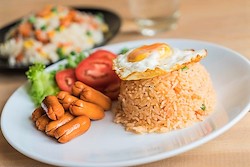 |
American Fried Rice (Photo: Gowithstock) |
| |
| |
|
|
|
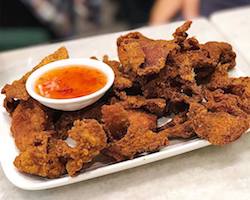 |
|
Fried chicken skin – the best part of the chicken?
When KFC Indonesia announced its limited time offer for deep-fried chicken skin on Facebook in May this year, it garnered positive feedback on social media. The dish sold out quickly despite the opinions of some customers that it was pricey (RP 13,396 or USD0.98). A month later, KFC fried chicken skin arrived in Bangkok. This time, the chicken skin snack was sold in two different sizes: B139 (USD4.50) for a 60 grams portion, and B49 (USD1.59) for a 20 grams portion. The snack was made available in only six outlets which led to long queues and wait times.
Southeast Asians are no stranger to crispy chicken skin snacks. It is a childhood comfort food, a midnight snack to munch on while watching a football game on TV with friends.
However, this snack, once a common street or home nibbles, is now a rare sight due to the growing number of health conscious consumers. Several local eateries in Singapore are serving their own version of fried chicken skin. Fast food chicken joint 4Fingers have their version called the ‘Skinnies’, a crunchy fried skin that has been marinated with a mix of spices. PappaRich’s version of battered fried chicken skin at SGD5.90 (USD4.35) comes with sweet chilli and mayonnaise dipping sauce.
For a Thai version of deep-fried crispy chicken skin, one may head to Siam Society restaurant in Jalan Riang.
At the end of the day, there is no denying that too much deep-fried chicken skin is fattening. Perhaps that is why the dish is often served in small portions.
| |
Battered crispy chicken skin (Photo: PappaRich’s Facebook page) |
| |
| |
|
|
| |
|
|
|
 |
|
Hua Hin: an up and coming rustic expat retirement hotspot
Hua Hin is a small rustic seaside town that is approximately a three-hour drive south of Bangkok. Located on the gulf of Thailand, it is a popular weekend holiday destination for Bangkok residents. It consists of a five kilometer long beach stretching from central Hua Hin to the hills of Khao Takiab, and several affordable seafood eateries.
This little seaside town is also popular among European retirees. It is a quiet classy corner that offers affordable high-quality standard of living. It has fantastic coastal views, a lively cultural scene, and incredibly low crime rates as the town also hosts the royal family’s summer palace. In fact, US News and World Report 2019 named Hua Hin as one of the 10 best places to retire in Asia.
Beyond the charms of a quaint little Thai town, Hua Hin boasts some of the most luxurious hotels, formal dining restaurants, lively night markets, and cool trendy cafes.
The Coffee Club Hua Hin
For something safe and familiar, there is always good old coffee at The Coffee Club Hua Hin. Located right next to the Hilton Resort & Spa, this Australian chain is a nice relaxing place for good coffee and a light meal. It is also a popular breakfast spot for many expats.
The Tea House
The Tea House is a high-end eatery located at FN Factory Outlet shopping mall that serves French cuisine and tea. Customers can enjoy the café’s savory dishes or their afternoon high tea set, whilst relaxing in a spacious setting featuring high ceilings decked with overhanging plants and plush European furniture. Items on the menu in The Tea House starts from B90 (USD2.90).
Wilaiwan Hua Hin
This restaurant is set in an American inspired cottage house and is known to local retirees for their posh afternoon tea sets with tea and scones. For lunch or dinner, do not miss their signature rib steak with house specialty sauce or their smoked duck with mashed potato.
Hua Hin Night Market
This is the go-to place for cheap, tasty local street food. The road that hosts the Hua Hin Night Market is also home to some of the best seafood restaurants in town.
| |
View from Hilton Resort & Spa |
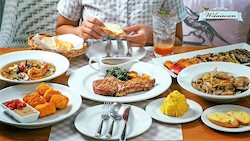 |
American inspired dishes at Wilaiwan Hua Hin (Photo: Wilaiwan Hua Hin Facebook page) |
| |
|
|
| |
|
|
|
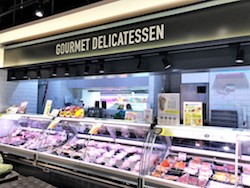 |
|
Gourmet meals prepared to order at short notice in a supermarket
Having a chef prepare a gourmet meal tailor-made to each customer’s individual selection of meat, chicken, seafood, and fresh produce is no longer restricted to the sphere of upmarket restaurants. This unique dining concept was chanced upon in a Singapore supermarket. Catering to busy shoppers with a limited schedule, the dine-in section of the supermarket provides customers with the opportunity to select their individual meal ingredients, hand over their order to the chef for preparation and continue their shopping while the meal is being prepared. Customers may personally choose from a wide selection of meat cuts, chicken parts sealed in sous vide packing, fresh fish and vegetables attractively displayed on the supermarket shelves for inclusion in their cooked to order meal. Not surprisingly, we recently witnessed a steady stream of office workers coming in during their lunch breaks to select their own ingredients for preparation by the chef at the cooking station. A piping hot cooked to order meal prepared within very short duration costs only between SGD6.50 to SGD8.50(USD4.80 to USD6.30).
Bangkok also has its own upscale version of cooked to order meals at the Gourmet Mart located in Siam Paragon. Here, customers can pick from a diverse range of seafood including live crabs, shrimps, clams and oysters. Chilled quality beef cuts, chilled chicken parts, rows and rows of salads and pasta are also available options. Dining tables are strategically placed next to eye catching displays of wines and beer or fresh fruit and juices tempting diners to pair them with their meals. |
|
An array of gourmet items awaiting selection for cooked to order in Singapore supermarket |
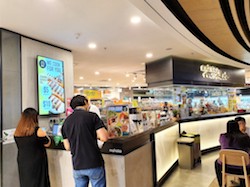 |
Singapore shoppers placing their individually selected ingredients with the station cook |
 |
Diners seated next to the live seafood counters at Gourmet Mart Bangkok |
 |
Shoppers at Gourmet Mart, Siam Paragon selecting their salads to go with their cooked to order meals |
| |
| |
|
|
|
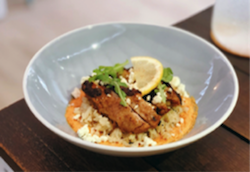 |
|
New Restaurants for the Busy Bees in Singapore!
According to the Department of Statistics Singapore, Food and Beverage (F&B) sales hit an estimate of SGD826 million in April 2019. This is a 3.1 percent growth since last April. New cafes, restaurants, and eateries also continue to open across Singapore.
In the Central Business District of Singapore, new food outlets look to serve always-busy executives and office workers with a variety of food options.
Cheeky
Cheeky is a newly opened café along Neil Road (between Tanjong Pagar and Outram Park) that offers healthy food options. One of its signature dishes is ‘That Healthy bowl’. It combines cauliflower rice, feta and burnt capsicum hummus, topped with Mediterranean-spiced chicken. Cheeky also offers scrambled eggs with a twist – one that is mixed with sambal chili crab sauce and red onions.
Chico Loco
The Loco group, a Mexican restaurant and bar group, has opened its third restaurant at Amoy street. Named Chico Loco, the restaurant presents healthier, guilt-free Mexican food. Its famous dish – the Mexican Spit-Roasted Chicken – is made by brining the chicken for ten hours in a solution containing agave nectar. The chicken is marinated with a secret blend of herbs and spices such as dried oregano, mustard powder, and achiote. Finally, the marinated chicken is roasted to obtain a smoky, luscious finish.
Joyden
Joyden, a brand that specializes in Cantonese cuisine, has launched its first casual dining concept restaurant in Great World City. Named Ho Fook Hei, the restaurant’s signature dish is the Rose Wine Soy Sauce Chicken. The first step of cooking the Rose Wine Soy Chicken involves seasoning chicken with salt. The chicken is then braised with a special soy sauce and Chinese herbs for a whole day. Lastly, a spoon of rose wine is added to the dish before serving.
| |
Photo: Healthy bowl (Daniel's Food Diary's Facebook page) |
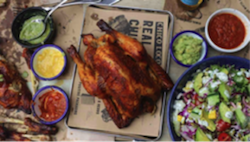 |
Photo: Mexican Spit-Roasted Chicken (Chico Loco's Facebook page) |
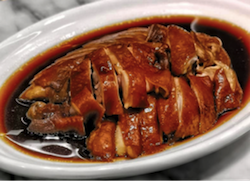 |
Photo: Rose Wine Soy Sauce Chicken (Ho Fook Hei's Facebook page) |
| |
|
|
| |
|
|
|
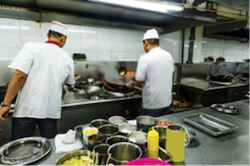 |
|
What’s behind the success of food delivery apps in Southeast Asia?
Global statistics suggest that the online food delivery market is worth more than US$35 billion annually. Food delivery apps have also been successful in Southeast Asia. These include Deliveroo, GrabFood, FoodPanda, HonestBee, and Grain.
Their success can be attributed to several reasons including the unique business models they operate on.
Network driven model
Online food delivery businesses that adopt a network driven model make money via two ways. Firstly, it brings business to its vendors (restaurants) and earns a commission for every sales transaction made via the app. Secondly, the food delivery application charges a delivery fee for the convenience it offers by bringing food to the doorstep of consumers. Back in 2012, FoodPanda was one of the first delivery services to use this business model by delivering orders to their consumers.
Cloud Kitchen model
Cloud Kitchen is a business model used by restaurants that do not own any physical stores. Instead, chefs are hired to prepare meals in a central area of Singapore before the food is shipped to the customers. Grain, a Singapore food tech start-up, is one such company that adopts the cloud-kitchen model. Grain has its own team of chefs to prepare meals in a shared kitchen space and a delivery team to bring the food to their customers. Leveraging this model, Grain is able to reduce costs by eliminating customer seating, air-conditioning, and rental fees.
Besides the business model, one other reason for the success of these online food delivery companies is the convenience factor. It allows consumers to stay in the comfort of their homes or offices, and have food delivered right to their doorsteps.
Looking ahead, the global food delivery market is set to reach US$365 billion by 2030. The landscape will only become increasingly competitive. Beyond business models and the convenience factor, online food delivery enterprises must find new ways to differentiate themselves in order to stand out. |
|
Photo: Chefs preparing meals in a shared kitchen space |
| |
| |
| |
|
|
|
| |
|
News Bites : July
Cambodia
Cambodian hotels eyes Biennial ASEAN Green Hotel contest
Thirty-five hotels across Cambodia have applied for certification from the ASEAN Green Hotel Standard in order to participate in the ASEAN Green Hotel Award ceremony for 2020 to 2022. Hotels will be judged according to 11 criteria including safe location, good service, staff benefits, social responsibility, domestic product use and environmental conscience (saving water and electricity, as well as having a proper waste management system).
Indonesia
Bulog plans to import 30,000 tons of Indian buffalo meat
Due to reported shortage of beef in the country, Indonesia’s State Logistics Agency (Bulog) announced plans to import another 30,000 tons of buffalo meat from India this year.
Laos
CP All eyeing master franchise agreement to operate 7-Eleven in Laos
CP All Thailand is currently in negotiations for a master franchise agreement to establish and operate 7-Eleven outlets in Laos and Cambodia, according to The Nation, a Thai Daily newspaper. The company currently operates 10,000 7-Eleven outlets in Thailand.
Malaysia
Texas Chicken opens second drive-thru outlet
Texas Chicken opened five new outlets in Malaysia this year. Two of which are drive-thru outlets. Its second drive-thru outlet is also a 24-hour outlet.
Myanmar
Ministry of Commerce (MOC) drafts bill to allow imports of foreign spirits
MOC is drafting a bill that will allow imports of foreign spirits. The news was taken favorably by foreign spirits companies. Imports of foreign spirits have been banned by Myanmar’s military government since 1995, leading to a black market in distilled spirits estimated to be worth several hundred million dollars annually.
Philippines
JBPX to launch Panda Express restaurants in Philippines
JBPX Foods Inc. is a 50/50 joint venture between Philippines Jollibee Food Corp. and US Panda Restaurant Group. The company is established to operate Panda Express restaurant chain in the Philippines. Panda Express is one of the major casual Chinese American restaurant players with over 2000 outlets in 10 different countries. JBPX Foods will focus on developing five stores in Metro Manila in its initial stage.
Shake Shack debuts in Philippines
Shake Shack Philippines opened its first restaurant at Bonifacio Global City (BGC) in metro Manila. The restaurant’s Instagram page garnered 16,000 likes for the launch event. The BGC restaurant is Shake Shack’s second outlet in the Southeast Asian region after Singapore.
McDonald’s Philippines aggressive expansion move
McDonald’s Philippines is on an aggressive expansion path. The company is looking at 50 new outlets this year, bringing the total number of outlets in Philippines to around 700. Both new and existing outlets will eventually be equipped with McDonald’s NXTGEN system which allows customers to place their orders and pay via a touchscreen kiosk. Customers using the kiosk will also be able to access a McDonald’s ‘secret menu’.
Singapore
Sadia Singapore announces new RTC Mala chicken wings
Sadia Singapore announced its latest flavor, the ready-to-cook (RTC) Sichuan Mala Wings, on June 28 on its Facebook page. The Sichuan Mala Wings was developed for easy preparation and can go from freezer to dining table in under 12 minutes. The product is sold in 400 gram packs from USD5 at major supermarkets in Singapore.
Thailand
USD30 million to revamp Big C Vietnam
Central Group, a Thai retail giant, will be investing up to USD30 million to revamp its Big C supermarkets in Vietnam, according to VNExpress.net. Thirteen of the 34 Big C supermarkets currently operating in Vietnam will be expanded and upgraded by 2021. Some of the existing outlets will be upgraded into high-end retail centers.
CP Group to build B10 billion multi-use development in Pattaya
CP Group Thailand will be investing B10 billion (USD327 million) in a large multi-use development in Pattaya. The project spans more than 480,000 square meters and will include a Pattaya mall, hotel, residential complex, cinemas, and a convention center. The development will be located along the USD7.3 billion rail line that will connect three international airports around Bangkok and Pattaya. The rail line will commence construction in 2024.
Lawson Thailand plans expansion along travel nodes
Saha Group, operator of Lawson Thailand convenience stores, plans to open 30 new convenience stores in Thailand’s transport facilities such as the metro subway system and airports by 2021. The company established the Partnership Saha Lawson, a joint venture with the Japanese chain, with a registered capital of USD645,000, to manage its local Lawson outlet operations.
Sizzler Thailand shift marketing strategy to match consumer lifestyle
Sizzler restaurants Thailand adopts new business plan to cope with changing consumer lifestyle. The restaurant spent B20 million (USD645,000) to renovate its Siam Center restaurant with a green concept in store design, tone, and menu items. The company also introduced delivery services and plans to increase the delivery portion of business to 20 percent in the next few years. The Sizzler restaurants format will be halved to 200 to 300 square meters from the current 400 to 500 format. The first of the new format Sizzler restaurant will open next year.
Tim Hortons restaurant chain to launch in Thailand
WeEat Co., part of the Wattanavekin family group, signed a master franchise agreement with Tim Hortons to bring the restaurant chain into the country. Tim Hortons is a quick service fast food chain specializing in coffee and donuts. The company has almost 5000 outlets in 14 countries. | |
| |
|
|
| |
|
|
|
|
Disclaimer: All opinions and views expressed in the articles published in the newsletter are those of the individual journalists and do not necessarily reflect those of the publisher, the newsletter's sponsors or USA Poultry & Egg Export Council.
You have received this email because you have registered to get newsletters from USAPEEC ASEAN.
If you prefer not to receive these updates, please
click here
to unsubscribe.
Do not reply to this email. For enquiries, go to www.usapeecasean.com
® USA POULTRY & EGG EXPORT COUNCIL
541 Orchard Road, #15-04, Liat Towers, Singapore 238881 Tel: (65) 67371726 Fax: (65) 67371727
*|REWARDS|* |
|
|
|